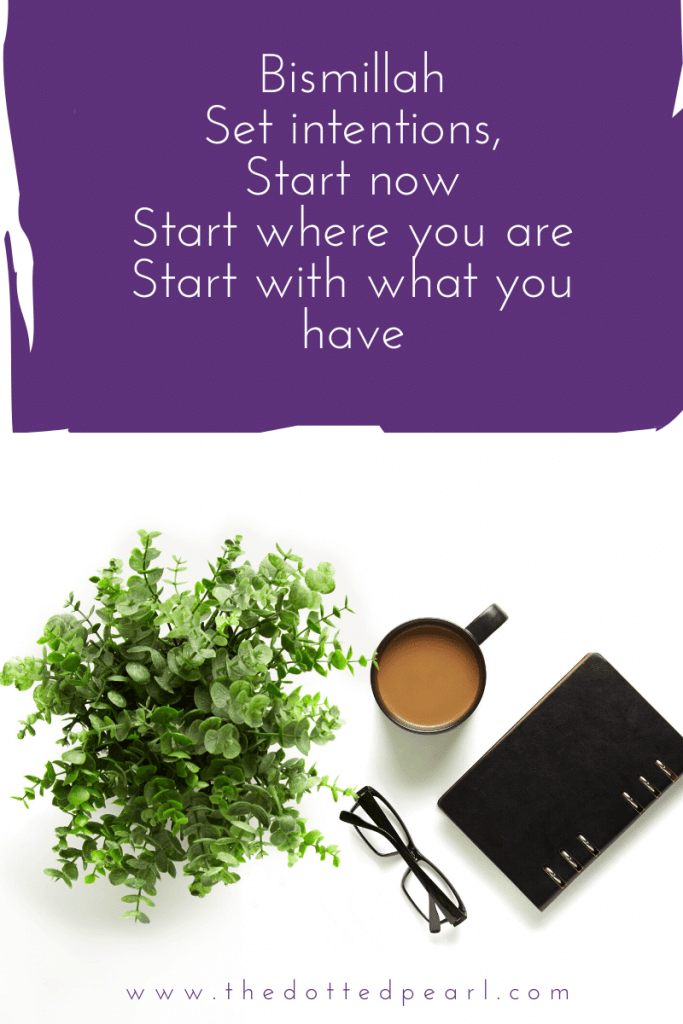Qur’an journaling has been around for a while and it is the new buzzword for intentional Muslims all around the world. I have had a lot of people reach out to me since I started the An Ayah A Day series three years ago asking about it and I remember doing a post then. However, I moved my site and lost my previous posts. So here goes…
What is Qur’an journaling?
It is simply journaling using the ayahs of the Qur’an as a backbone. You read an ayah, research it, reflect on it and assess your situation based on that ayah and then formulate an action plan and even make dua based on that ayah.
Why Qur’an Journaling?
Ah! This is relative, it depends on you. It also depends on the day. I find that people that have purchased my Qur’an journals have bought them for various reasons. The one sister whose response inspires me every time I hit a consistency glitch said,
“I want it to be my legacy. That thing I want to leave behind for my children. A way for them to remember me when I am gone.”
So you see, It can be your legacy.
How do I get started?
Easy! Get a sheet of paper or a journal, a pen and even the Qur’an and Tafseer apps on your phone would suffice.
Yeah! That’s all. It’s okay if you don’t have fancy pens or cute stickers or even the creative doodles and drawing.
Set your intentions – Always start with the intentions.
Start now.
Start where you are.
Start with what you have.

Over the years, the format for my journaling has evolved. Some days, I don’t even like the structure and I prefer a blank sheet. So find what works for you. Here are some ideas for structure;
- Easy-Peasy-Lemon-Squeezy method
Ayah – You write out an ayah in Arabic or English.
Notes – What stands out at first glance, Asbahul Nusul (Reasons for revelation), some background, notes from the study of the Tafseer.
Reflections – How does the ayah relate to your situation right now.
Action Plan – Way forward – Simply put, how can I live this ayah.
2. The SOAP method
I can hear those in medicine go Subjective data, Objective data, Assessment and Plan. However, here it stands for Subject, Observation, Application and Prayer.
Subject – The Ayah in focus
Observation – A look at the ayah – Reason for revelation, Tafseer, new words, the names of Allah used in the ayah, Something you didn’t notice before (if its an ayah you know well).
Application – How the ayah applies to you, to others around you especially at that moment.
Prayer – and Gratitude. Gratitude increases, never forget that.
So tell me, do you Journal? Was this helpful? What questions do you have or need clarity on?


Jazakillahi khayran sister for this beautiful piece prior to the start of Al-Hujurat challenge tomorrow in shaa Allah… Sincerely this is very helpful because I have been thinking of how to go about the challenge and how to get connected with the challenge. Alhamdulillah you post this. I pray Allah subuanawatallah continue to strengthen and increase you in Eeman to guide and nuture your community.
Wa iyyaki dear Ameenah. I appreciate you truly. Amin to your duas and I wish you same.
This is a wonderful write up, it will surely get me and other people closer to Allah.
Jazakallahu khair sister.
Jazakallah khair sis!!!!!
May Allah swt make it easy for us all.
Wa iyyaki Hauwa. Amin to your duas. Thank you for stopping by.
As brief as it is, it’s open up my mind to something I’ve been longing to do. Jazaakallahu khayran sister ❤️
Such an inspiring note.. despite short message.. impact is string! Mubarak sis
Alhamdulillah. Do let me know if you give it a try or have any questions
Alhamdullilah
this is great
I find that Quran Journaling is what we’ve
been recommended to do in the Book of Allah, the Reminder.
We can recall there are many ayah or verses of al Kitab ul Allah, the Quran
asking us to ponder and reflect about the Ayat of Allah be they the verses of Allah’s Revelation or the ability to see the signs of Allah.
Alhamdullilah
You’ve inspired many of us to take a more in depth step by writing down the words blessed words from our Lord.
Although we recite the Quran and are to be conscious of what we are saying.
Writing down help us to sit and focus on the words of Allah.
This way we are paying attention like you said to each word.
I’m grateful to Allah helping me discover the method you promote as it generates action, thought, motivation and incentives for hope to better our characters, our lives and our commitment to Allah.
Perhaps Allah will make our journey to Him smoother.
Thank you so much.
May Allah bless you and forgive us all our faults and weaknesses, and admit us to gardens beneath which rivers flow.
Ameen
Wa alaikum salam, Jazakillahu khair for your kind words. May Allah ﷻ love you. Amin to your du’as. You can send me an email and i would send you details about a community we have for that inshaAllah.